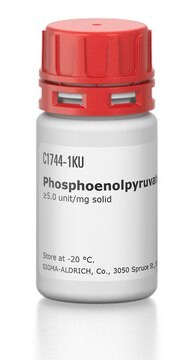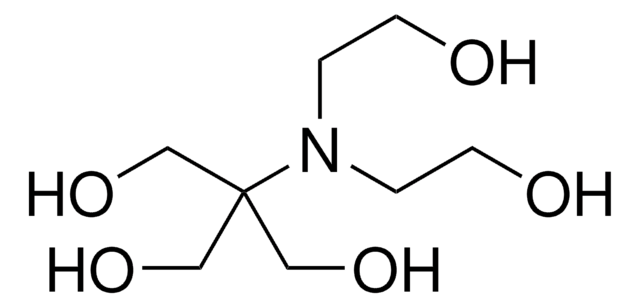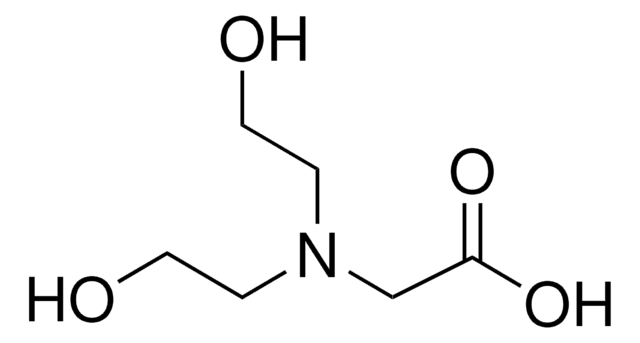RES3077T-A7
Tricine
Fabricación farmacéutica
Sinónimos:
Tricine, N-[Tris(hydroxymethyl)methyl]glycine
About This Item
Productos recomendados
biological source
synthetic
Quality Level
form
powder
technique(s)
cell culture | mammalian: suitable
impurities
Endotoxin, microbial, and trace metals; tested
useful pH range
7.4-8.8
pKa (25 °C)
8.1
suitability
suitable for manufacturing use
foreign activity
Cytotoxicity, DNase, NICKase, RNase, and Protease; tested
SMILES string
OCC(CO)(CO)NCC(O)=O
InChI
1S/C6H13NO5/c8-2-6(3-9,4-10)7-1-5(11)12/h7-10H,1-4H2,(H,11,12)
InChI key
SEQKRHFRPICQDD-UHFFFAOYSA-N
¿Está buscando productos similares? Visita Guía de comparación de productos
General description
M-Clarity Program
Buffer quality is vital for the success of biopharmaceutical processes, because buffers are indispensable in nearly every production step.
Our broad portfolio of buffer materials manufactured under appropriate controls is tailored to your needs. Ranging from non-GMP grades for low-risk application, to IPEC-PQG GMP for higher-risk applications, we have products covering all your manufacturing needs.
Application
Tricine can be used in a wide array of biological applications including as a component in media formulations. Specific applications include buffers for electrophoresis, protein purification and diagnostic reagent production.
Packaging
RES3077T-A701X: 100 gm container
RES3077T-A702X: 1 kg container
RES3077T-A704X: 10 kg container
RES3077T-A705X: 25 kg container
Legal Information
Replaced by
Storage Class
13 - Non Combustible Solids
wgk_germany
WGK 3
flash_point_f
Not applicable
flash_point_c
Not applicable
Elija entre una de las versiones más recientes:
¿Ya tiene este producto?
Encuentre la documentación para los productos que ha comprado recientemente en la Biblioteca de documentos.
Los clientes también vieron
Nuestro equipo de científicos tiene experiencia en todas las áreas de investigación: Ciencias de la vida, Ciencia de los materiales, Síntesis química, Cromatografía, Analítica y muchas otras.
Póngase en contacto con el Servicio técnico







